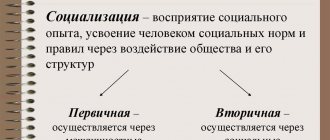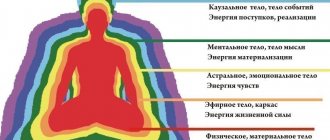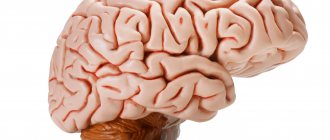Superconsciousness is the emotional activity of the human psyche, activated to resolve complex life and creative problems; along with the subconscious, it is an unconscious process of the psyche. Superconsciousness manifests itself in creative aspects, in the form of the construction of fundamentally new philosophical forms, worldviews, and the functioning of the highest manifestation of such conscious spheres as social, value, and cognitive. This is all that humanity, intuition, parapsychological abilities, insights can achieve evolutionarily.
Of the three aspects of the human psyche (subconscious, conscious, superconscious), the activity of the superconscious is aimed at creative manifestations, ideas, hypotheses, and intuition.
Superconsciousness is a concept in psychology that cannot be fully studied, since we can immediately observe the final result of its activity, bypassing the paths of achievement and methods of obtaining an idea. The activity of the superconscious is of an emotional-imaginative nature and is aimed at satisfying and resolving the primary dominant practical emotional needs and tasks.
What is human superconsciousness?
Superconsciousness is the mental process of human communication with God through thought forms.
Superconsciousness is an unconscious process of the psyche aimed at communicating with God and the Forces of Light. The two main chakras responsible for superconsciousness in humans are Atman, located in the chest, and Sahasrara, located at the top of the head. Communication with Higher Powers has a clear structure.
Through the crown of the central channel, the flow of knowledge, Spirit and Light enters the Atman. It is here that we physically feel a surge of love, tenderness, nobility: the chest “burns”, takes our breath away, “bursts” with delight.
By developing superconsciousness, we get closer to achieving higher blissful states, we learn to think big, intuitively understanding the will of the Almighty, accepting his knowledge unconditionally, and serving him.
By improving, new levels of consciousness and transitions to the category of Teachers, Initiates, and Priests become available. Man becomes a mediator between the earthly and cosmic worlds.
By gaining knowledge, superpowers open up for levitation (floating in space contrary to the laws of gravity), transmutation (the ability to transform one thing into another), synthesis (the ability to understand the incomprehensible, combining into a single whole), and most importantly, a person gains the protection of the Forces of Light inaccessible to Evil.
Superconsciousness allows a person to completely surrender himself to the Will of God, relying on his expression to choose the path. This is the ability to establish a connection with God at the level of faith, intuition, and ideally - all internal decisions made, feelings experienced, emotions that arise become an expression of the Will of the Creator.
Today, for the majority, the highest blessings have been lost:
- The ability of intuitive direct communication with God, an idealistic understanding of the love of God. You can often meet Teachers who carry Knowledge for preferences.
- Perfect body control. The ability to enter a state of mind where only a thought can put a person to sleep, stop the heart, instantly move to any corner of the universe and receive information about everything that is and will be.
- Absolute realization. Initial knowledge about your capabilities, purpose, path, methods of achieving results.
It is possible to develop superconsciousness on your own, but it takes many years and effort. Therefore, it is advisable to take the first steps with a Mentor, who will teach you how to distribute spiritual and physical strength and indicate the right vector.
P. Simonov
“Science and Life” No. 12, 1975, pp. 45-51.
People have long paid attention to the fact that many manifestations of the vital functions of their body, many types of brain activity take place without the intervention of consciousness. We are not aware of the processes occurring every minute in our internal organs, we do not notice weak or unclear, “masked” effects on vision and hearing, although they are perceived by the brain, this is evidenced by the bioelectric reactions recorded by the device. Moreover, we often cannot explain to ourselves and others how we came up with an interesting scientific idea, an ingenious solution to a technical problem that we have been struggling with for many days.
Unfortunately, the term “subconscious” is used to describe almost everything that is not conscious. As a result, the subconscious has turned into a repository of phenomena that are extremely distant from each other. In this state of affairs, the illusion of the internal kinship of these phenomena arises, and the highest manifestations of the human spirit begin to be seen as a direct consequence of elementary biological impulses - a mistake that the outstanding Austrian psychologist Sigmund Freud did not avoid .
It is obvious that the productivity of the analysis of the “unconscious” depends to a large extent on how clearly we can determine the nature of consciousness itself, not only in the philosophical aspect, that is, as a reflection by the brain of an objective, primary existing reality, but also in a natural sense, from the standpoint of explaining the highest human nervous activity.
What is superconsciousness?
Superconsciousness is a quality due to which a person merges with God at the level of external and internal actions. That is, unconditional faith allows you to feel, make decisions and perform actions, relying on a divine connection.
Superconsciousness as a multidimensional unity with God. Superconsciousness is born when a person is detached from the earthly, not attached to things, people, he must develop a consciousness that does not reside anywhere. This consciousness is self-sufficient, it is not tied to the sphere of births and deaths, it is not clouded by sensuality, but it allows a person to relatively easily acquire knowledge, skills, abilities, and successfully engage in activities that were originally revealed.
Not many people have superconsciousness, but this does not mean that striving for it is pointless. Living on earth, there is evil activity in everyone, which indicates that we are living beings. After all, if a person contained only good activity, he would become God.
Anyone can develop hyperconsciousness. Gradually, a person discovers the joy of being without being tied to a specific event. Feelings become clear, emotions become deep, ideas become informative. A person transforms externally and internally, he attracts people to himself, emitting positive vibes.
To develop superconsciousness it takes time and daily work, which is expressed in the following:
- Strengthening faith and love for God;
- the desire to understand the will of God and unconditionally follow it;
- development of comprehensive love for everything (living and nonliving) that was created by the Creator;
- meditative practices, especially on the Atman and Sahasrara chakras;
- acceptance of God as the one great teacher of justice;
- cultivating constant joy.
The path to superconsciousness and superconsciousness will be much shorter if there is a spiritual Mentor nearby (not a psychologist, not a healer, not a coach). It is he who is responsible for forming in a person the concepts of good and evil, helps to choose the bright path and bring the soul closer to God.
In 1975, P.V. Simonov proposed a classification of unconscious phenomena:
“As for the unconscious activity of the brain, it must be divided into at least three groups of phenomena fundamentally different from each other.
1. Unconscious (preconscious) - vital (biological) needs for food, water, procreation, avoidance of harmful factors and the innate behavioral acts prompted by them - unconditioned reflexes, according to I.P. Pavlov , including the most complex (instincts); genetically determined traits of temperament, features of the bodily constitution that affect the psyche and behavior. In Freud's , this group of phenomena is close to the concept of the id, to “the desire to satisfy instinctive needs while maintaining the principle of pleasure.”
2. Subconscious - everything that was conscious or can become conscious under certain conditions. These are not only well-automated skills that have therefore ceased to be recognized, but also social norms deeply internalized by the subject, which have become his belief, the regulatory function of which is experienced as “the call of duty,” “the call of the heart,” “feelings of guilt,” etc. Along with previously realized experience, which fills the subconscious with specific content that is external in origin, there is also a direct channel of influence on the subconscious in the form of imitative behavior. Thus, through imitation, a child unconsciously fixes standards of behavior found in his immediate environment, which over time become internal regulators of his actions. The process of acquiring “personal knowledge” is considered by M. Polanyi using the example of mastering skillful actions. “By observing the teacher and striving to surpass him, the student unconsciously masters the norms of art, including those that are unknown to the teacher himself.”
The requirements of the social environment, which have passed into the sphere of the unconscious psyche, 3. Freud designated the terms “super-ego” and “I-ideal”. The first source of these demands are parents. “In the further course of development, the role of the father passes to teachers and authorities; their commandments and prohibitions retain their force in the I-ideal... Social feelings rest on identification with other people on the basis of the same I-ideal.”
Conservatism of the subconscious is one of its most characteristic features. […] We come to the conclusion that there is no creativity in the subconscious, which implies overcoming previously established norms.
Polanyi, who has already been quoted by us, said this very accurately . Freud of the category of the responsible personality , explaining this personality as the result of internalized social pressure acting from within consciousness through the super-ego... The super-ego cannot be free, and it would be ridiculous to demand freedom for it.”
3. Creativity in brain activity is represented by the mechanisms of superconsciousness.
Superconsciousness is an unconscious recombination of previously accumulated experience, which is stimulated and directed by the dominant need to find means of satisfying it.
The unconsciousness of these initial stages of any creativity represents the protection of emerging hypotheses and plans from the conservatism of consciousness, from the excessive pressure of the evidence of direct observations, from the dogmatism of firmly adopted norms. Consciousness retains the functions of formulating the problem, putting it before the cognizing mind, as well as the secondary selection of hypotheses generated by the superconscious, first through logical assessment, and then in the crucible of experimental, industrial and social practice.
Being probabilistic in nature, superconsciousness is by no means reduced to a purely random recombination of traces stored in memory. His activities are channeled three times:
1) previously accumulated experience, including the assigned experience of previous generations; 2) the task that consciousness sets before the superconscious when it encounters a problematic situation; 3) dominant need.
“Fruitless combinations,” argued the mathematician A. Poincaré , “will not even occur to the inventor. Only really useful combinations and some others that have signs of useful ones come into the field of view of his consciousness, which he then discards.” An example of direct interaction of the superconscious with the subconscious without the participation of consciousness, apparently, can be dreams, where there is no critical selection of recombined memory traces. In this we see the fundamental difference between dreams and the results of the creative activity of the waking brain.
Despite all the reservations made above, again and again one has to deal with attempts to identify the superconscious with Freud's about the super-ego. […] Let us note that Freud nowhere in his writings uses either the term or the concept of “superconsciousness.” Freud calls impulses that penetrate into consciousness preconscious. They can also become conscious “if they manage to attract the gaze of consciousness... our names for relationships are unconscious, preconscious, conscious.” Freud's “super-ego” belongs entirely to the subconscious. The similarity between superconsciousness and super-ego comes down to the fact that both of these phenomena belong to the sphere of the unconscious psyche.
Different from the superconscious and at the same time close to the super-I (i.e., the subconscious) are the so-called supraconscious phenomena, for they “represent, assimilated by the subject as a member of a particular group, samples of behavior and cognition typical for a given community, the influence of which on his activity is not actually recognized by the subject and is not controlled by him” ( Asmolov , 1985). M.G. also puts a similar meaning into the term “supraconscious”. Yaroshevsky (1985), according to which supraconsciousness is the “connection” of the subject “to forms of the logic of the development of science that do not depend on his consciousness.”
Simonov P.V., Selected works in 2 volumes, Brain: emotions, needs, behavior, Volume 1, M., “Science”, 2004, p. 363-365.
A worthy goal according to G.S. Altshuller
Like nature's creativity
The outstanding Darwinist K. A. Timiryazev was one of the first to point out the similarity of the mechanisms of creative thinking with the mechanisms of the emergence of new species in the process of evolution of living beings. It is the uncertainty of the adaptive significance of new characters that arise due to the variability of hereditary inclinations (mutations) that makes it possible to select the most valuable of them. Variability is an active search for the process of self-development and self-motion of living nature, limited by environmental conditions.
We observe something similar when forming and selecting hypotheses. The initial impetus for D.I. Mendeleev’s discovery of the periodic law was a completely utilitarian task: the need to resolve the issue of the sequence of presentation of the material in the “Fundamentals of Chemistry”. The requirements of the problem, which in no way contained or presupposed the final “sought”, led to the idea of using the atomic weight of elements as the starting principle for the construction of materials.
Weight arose as one of the possible options, dictated by the previously accumulated knowledge of the outstanding chemist. The moment of insight turned out to be connected with a hint, an analogy in the form of solitaire, and Mendeleev initially arranged the elements in descending order of atomic weight. Then in a dream he saw everything in reverse, that is, the elements arranged in order of increasing atomic weight.
It is quite obvious that the discovery could not be a direct immediate reflection of reality, because where in nature the chemical elements are not arranged in order of increasing atomic weight, and the connection between the card game of solitaire and chemistry can baffle the wildest imagination. This means that creative thinking does not work on the principle of reproducing connections and relationships that are obvious to the observer’s consciousness, but on the principle of selecting neural connections between traces of previously accumulated impressions, which were initially already closed in the brain.
What mechanism, according to what laws, creates “mental mutations” as the starting material for constructing hypotheses that are subject to further selection? It is impossible to believe that “psychic mutagenesis” represents a kaleidoscope of purely random combinations of previously accumulated neural traces. Mathematical analysis of the game of chess showed the unreality of sequential enumeration of options. It is clear that there are patterns here that are unknown to scientists of today. However, one of the mechanisms of creative activity of the brain is known to us; it is the principle of dominance, discovered by academician A. A. Ukhtomsky.
Let us demonstrate this principle using an example of a situation that we often see in adventure films.
A man pursuing an enemy finds himself in a huge, dimly lit room: an underground garage, a tunnel, a catacomb. Some rustling sounds are heard there, shadows flash, something crunched and fell. What does the brain do? Thanks to the emergence of a “defensive dominant” (terminology by A. A. Ukhtomsky), the brain reacts to these stimuli as danger signals: a person freezes, points a weapon, even shoots. Please note: the vast majority of stimuli (rustles, shadows, etc.) are not objectively associated with the enemy, have no relation to him. It is the brain that makes them presumptive danger signals. And the pursuer, moving towards the goal, clarifies the meaning of the stimuli, selects the real signs of a lurking enemy among the many false signals. We see that in the end a model is formed in the brain that reflects objective reality, but the path to this reflection went through the elimination of “signal-enemy” connections, which in reality did not exist, closed in the brain by the influence of a purely internal mechanism.
Another example. I. P. Pavlov established that under certain conditions of the brain associated with its inhibition, bizarre disturbances in reactions to external stimuli arise with sleep - the so-called paradoxical and ultraparadoxical phases. The brain reacts to a weak stimulus as if it were a strong one and, conversely, does not respond to a signal accompanied by reinforcement (food, electric shock, etc.), but to a stimulus that has long ceased to be reinforced, it gives a food, defensive, etc. reaction . In other words, the brain distorts the real picture of the world, but it is precisely this ability to distort that sometimes brings us closer to the correct solution to the problem. Remember D.I. Mendeleev, who saw in a dream an “inverted” picture of the table of elements he had compiled, and only the last version formed the basis of the periodic law.
The dominant - the dominant focus of excitation in the brain - imperiously transforms the traces of received impressions, forming the most incredible combinations from them. Traces of other environmental influences end up in the “shadow” of inhibition surrounding the dominant focus and are processed by the mechanisms of the paradoxical and ultraparadoxical phases. Such manipulation of images of the real world sometimes leads to its false reflection - to myths, prejudices, and misconceptions. But it is absolutely necessary for creativity, for breaking through the routine of common sense. From the obvious to the incredible, which, if confirmed by practice, will become new obvious - this is the dialectic of creativity.
“In higher mental life, the inertia of the dominant excitation, that is, the dominant of the experienced moment, can serve as a source of “prejudice,” “obsessive images,” “hallucinations”; but it also gives the scientist that flywheel, the “guiding idea,” the “main hypothesis,” which frees thought from shocks and diversity and contributes to the cohesion of facts into a single experience” (A. A. Ukhtomsky).
Svarupa Samadhi
The culmination of the spiritual path is the transition from the physical body to the Divine body. The elements that make up the body dissolve to the level of light, pure elements, and the body of the practitioner disappears, transforming into an immortal, light, immaterial body of pure elements. Such a body is not limited by anything: neither time, nor space, nor the law of karma. It can travel to any worlds of the universe without limitation. This body is also endowed with mystical powers, that is, it is perfect. Such a body was achieved, for example, by Jesus Christ, Ramalinga Swamigal, Swami Brahmananda and other saints.
Types of Samadhi
There are different levels of immersion in the state of superconsciousness or samadhi:
- savikalpa-samadhi;
- nirvikalpa samadhi;
- Sahaja Samadhi;
- svarupa-samadhi.
I will not describe these four types of samadhi in detail, but I will comment a little on each of them.
If you wish, you can find more detailed information in other sources on the Internet or read in my book, which I plan to publish in February 2022. In this book, I will not only talk about samadhi in more detail, but I will also give step-by-step techniques that, by regularly practicing, you can enter this state.
So let's go back to the types of samadhi.










